Natural dyeing has become quite popular as a hobby. Since two batches of the same dyestuffs can vary, each dyeing adventure produces a truly one of a kind experience. The natural colors are more limited in range and more muted than commercial dyes and give a soft, earthy glow to knitted or woven yarns that many people love.

Beginning with Natural Dyes - How to Dye with Tea
by Ragtimelil
Natural dyes give a soft, muted light to your wools and fibers. Learn some basics about natural dyeing and start with a simple tea dye.
What to Dye
There are books on natural dyeing full of plants, methods and gorgeous pictures of dyed fiber. Most directions are for protein fiber. That is fiber from animals such as sheep, goats, rabbit or even dog. Silk dyes beautifully too. Cotton, linen and plant fibers will need some treatment before it can be dyed. Acrylics and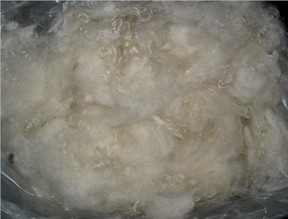 synthetics do not dye well
synthetics do not dye well
Fibers can be dyed right after washing, after carding or after spinning into yarn. Each method gives a slightly different coloration.
Natural Dyeing
 | The Handbook of Natural Plant Dyes: Personalize Your Craft with Organic Colors from Acorns, Black... Buttery yellow from garden weeds or gorgeous garnet-red dye from flowers — achieving stunning colors for your fabric, yarn, and other natural materials is almost as easy as boil... |
 | Harvesting Color: How to Find Plants and Make Natural Dyes Selection of the Crafters’ Choice Book ClubBeautiful natural dyes from plants found in the wild or grown in your own backyard. As more and more crafters are discovering, dyeing ... Only $14.85 |
 | The Complete Guide to Natural Dyeing Exploring natural and foolproof dyeing techniques—to coincide with the high demand for organic and rustic approaches to fiber arts—this colorful guide expertly utilizes the many... |
Synthetic Dyes
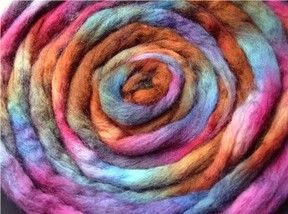 Until the mid nineteenth century, all dyes were natural. Synthetic dyes were discovered by accident while trying to make synthetic quinine. At first, dyes were made from aniline dyes and then benzidine or o-dianisidine. Certain cancers were linked to exposure to the dyestuffs. Today, while synthetic dyes are made from coal tar and petroleum, they are much safer.
Until the mid nineteenth century, all dyes were natural. Synthetic dyes were discovered by accident while trying to make synthetic quinine. At first, dyes were made from aniline dyes and then benzidine or o-dianisidine. Certain cancers were linked to exposure to the dyestuffs. Today, while synthetic dyes are made from coal tar and petroleum, they are much safer.
Commercial operations were concerned not only with safety, but the vast amounts of water and plants needed to produce natural dyes. In areas where land is scarce, growing food takes priority over growing dye plants. These are some reasons that commercial dyers have moved to synthetic dyes.
Dyeing wool
 | Dyeing Wool: 20 Techniques, Beginner to Advanced Learn how to add fascinating dimension, intensity, and texture to your textile projects. Step-by-step lessons show you how to spot dye, paint, and overlay color, among many grea... |
 | Hand Dyeing Yarn and Fleece: Custom-Color Your Favorite Fibers with Dip-Dyeing, Hand-Painting, Ti... No crafter should feel limited by the yarn colors available in a favorite fiber shop — not when it’s so fun and satisfying to hand-dye yarn and fleece right in the kitchen. Ulti... |
Natural Dyes
Many people think that because the word “natural” is used, that means it’s also safe. Not as much as you might think. Many natural dyes require the use of a mordant to bind the dye to the material. Mordants are heavy metals, such as copper, iron, and chrome and can be quite toxic. In addition, some of the plants themselves can be toxic. The sap of bloodroot, for example, has been used for hundreds of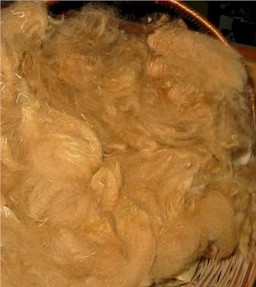 years as a natural dye for red, a rare color from a natural dye. It can cause death if ingested, but, more commonly, can cause severe irritation to moist membranes even after it has dried. Rita Buchanan wrote about her experience in her book, A Weaver's Garden, Growing Plants for Natural Dyes and Fibers.
years as a natural dye for red, a rare color from a natural dye. It can cause death if ingested, but, more commonly, can cause severe irritation to moist membranes even after it has dried. Rita Buchanan wrote about her experience in her book, A Weaver's Garden, Growing Plants for Natural Dyes and Fibers.
Some natural plants, however, are perfectly safe. The same alum used to make pickles, can act as a mordant. Hobbyists and fiber artists may find the art of natural dyeing very satisfying.
Natural Dye Books
 | Natural Dyes and Home Dyeing (Dover Pictorial Archives) All the information ever needed to extract dyestuffs from common trees, flowers, lichens, and weeds to create beautifully dyed materials. The heart of the book is 52 recipes for... |
 | A Weaver's Garden: Growing Plants for Natural Dyes and Fibers Valuable hints from a veteran botanist and weaver on dyeing fibers and fabrics, what soap plants to use for cleaning textiles, advice on fragrant plants to scent and protect fab... |
 | The Dyer's Garden Touching on the history and nature of dye plants, this comprehensive guide walks readers through a garden season from design to planting to harvesting for the dyepot, discussing... Only $26.99 |
Some Equipment
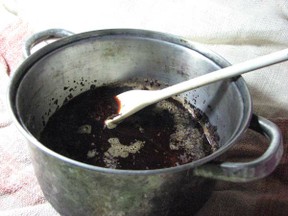
Do not use any pots or pans that you will want to use for cooking. Save them for your dyeing projects. Stainless steel is a good neutral pot to use. Some other metals may impart a change in color which may, or may not be what you want. Iron pots are often used to darken a color, called saddening.
Other chemicals such as ammonia or vinegar may brighten a color and can be used in the dye bath or as a dip after dyeing. Rusty nails will add iron, and short lengths of copper pipe will add copper.
Some dyes, called direct or substantive don’t require the use of a mordant or a special pot if made from edible dyestuff. Dyes of this type can be tea, coffee, vegetables or onion skins.
Dyeing with Tea
You can use coffee instead
Save your tea leaves or bags. You'll want about twice as much tea or as you have wool to dye, less if you're using fresh tea. Put in your pot and bring to a boil. Simmer about 30 minutes or less if the color is what you desire. Strain the tea out. Wet the clean wool and use just a drop or two of liquid soap to help it absorb the dye. Gently push the wool into the dye bath. Agitating or shocking the wool (going from hot to cold) will felt it. Handle it gently
.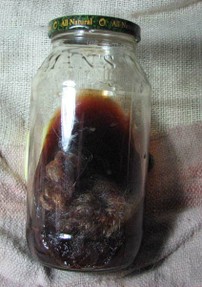 Simmer for about an hour, or, as I did, leave in a glass jar in the sun for a day or until it is as dark as you want. Rinse gently with warm water until it runs clear. Squeeze and lay out to dry.
Simmer for about an hour, or, as I did, leave in a glass jar in the sun for a day or until it is as dark as you want. Rinse gently with warm water until it runs clear. Squeeze and lay out to dry.
There are so many plants you can use for dyeing. You can get yellows and golds from onion skin and dandelion, green from carrots, radish and lettuce. Grey from roses and spinach, and orange from marigolds. Spices give good colors too.
All photos by Lana Pettey
You might also like
Detailed Clover Pom Pom Maker InstructionsStep by step how to photo tutorial for making yarn and wool pom poms with a p...
Runescape Fans! Make Yourself a Hat for RunefestHave you wanted a really unique hat that you can wear any time? How about mak...
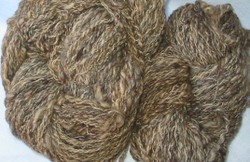

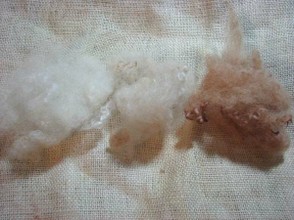
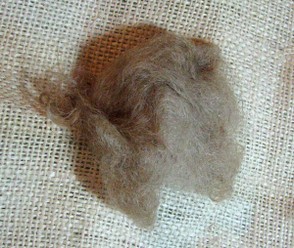
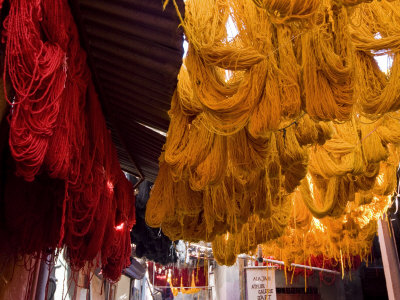

 How I Found My Free Family History Programon 09/05/2013
How I Found My Free Family History Programon 09/05/2013
 Finding a Graveon 09/01/2013
Finding a Graveon 09/01/2013
 Do Border Collies Make Good Pets?on 08/11/2013
Do Border Collies Make Good Pets?on 08/11/2013
 Hubert Patey - an Indentured Servanton 08/02/2013
Hubert Patey - an Indentured Servanton 08/02/2013



Doesn't this sound like fun?
I love Rita's book. I was growing all sorts of dye plants in my garden - when I had a garden. A lot of them are flowers you'd like to grow anyway.
I've read about this before and always wanted to try it myself but never had the time. I was saving onion skins for a while, but it never happened. I like the idea of having a weavers garden book (which you list) to grow plants that can be used for dyes.
I never thought of covering up stains with tea dye. Now I'll have to that. I have enough stained clothes....
Thank you!
It is fun, I have stained old linens with tea in order to cover up stains and have had remarkable results. thanks for sharing this info.
I'm with you. There is just so much to learn and only one lifetime!
This definitely sounds like fun! I have known about some of these natural dyes for a while. I've learned a lot of new stuff from your article, too, about safety and the different mordants. I love experimenting with natural processes like these.
@2uesday I accidentally threw out all my saved onion skins. I'll write more on dyeing as soon as I do more so I can take pictures. Thanks for your comment! Yes, tea is a favorite for aging fabric I hear. I dye wool mostly but they can be used for almost anything.
@Tolovaj Actually, I have a little gall that I was saving for just this purpose. I think it will probably have to be fermented in ammonia. I'll try it next after the lichen I have brewing.
Sure does. I was playing with this idea for some time now: natural dye used for ink. I heard about galls of certain plants, but don't know how to extract the dye... Alcohol is probably one option, but what percentage? Do you have a tip from this area, too?